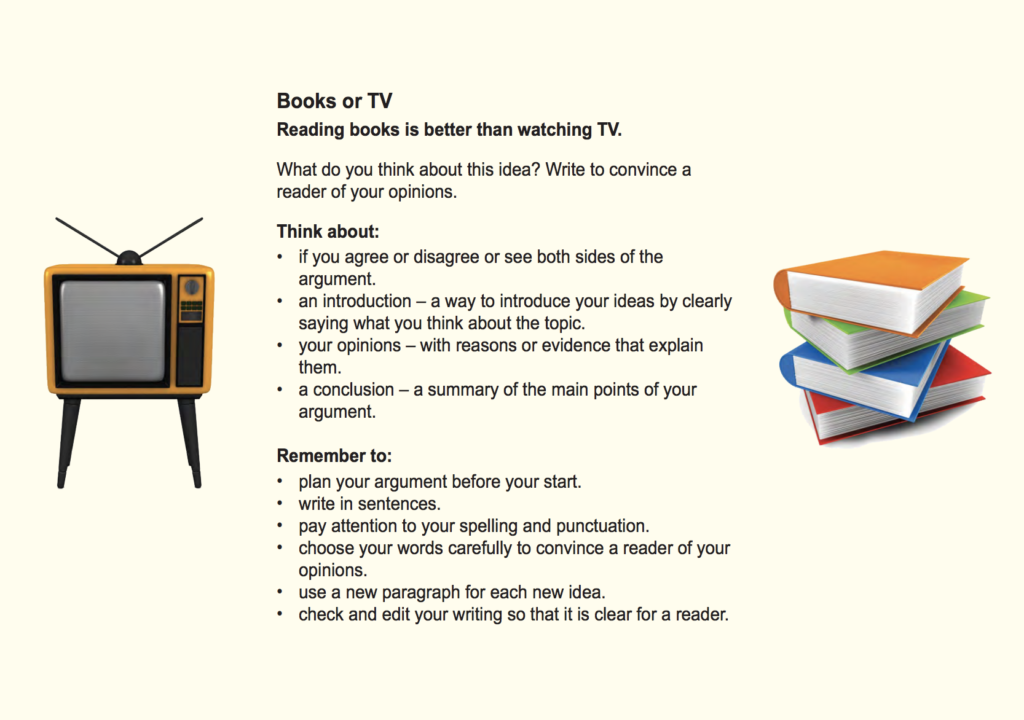Is your son or daughter sitting the Year 5 NAPLAN soon?
If so, you might’ve heard about how the NAPLAN is starting to have a differing and more significant role in the schooling of our students. Amongst the changes, parents can often find themselves confused and unsure as to how they can help their child perform well.
We’ve put together a guide to the Year 5 NAPLAN, to help you understand exactly what is expected of your child. Let’s get into it!
The Year 5 NAPLAN Exam
Reading
Writing
Language Conventions
Numeracy
Practice Papers
The Year 5 NAPLAN Exam
Have you a child already sit the NAPLAN? If so, you might already be familiar with the NAPLAN structure, as it’s the same across all of your child’s grades. In case you need a refresher, we’ll briefly break it down. Your child will sit three exams:
- Reading & Writing
- Language Conventions
- Numeracy
The first exam combines reading and writing, so that’s one less exam for your child. Awesome!
Depending upon your child’s school, they’ll either sit the exam in traditional paper format or in the new online system. You can read more about the transition to online and its effect on the Year 5 NAPLAN here.
Year 5 NAPLAN Tutoring can help boost your child’s confidence!
Now that you’re familiar with the style of the exam, we’ll break down what your child can expect from each:
Reading
Having the reading exam first ensures your child will hit the ground running! At least that’s what NAP are convinced of.
The reading section will see your child introduced to a number of different texts. The styles of these texts range from short narratives to biographical pieces, and the nature of the questions change accordingly.
It’s important to note that at Year 5 level, there are elements of increased complexity from Year 3. Sentence structure may be varied and some unfamiliar vocabulary is included, particularly subject-specific words, but its use will be supported by text and illustrations.
To help you better understand what each text style may ask of your child, we’ve included the below table from NAP:
| Text Type | What Students Are Expected To Be Able To Do |
|---|---|
| Short Narrative | - Locate directly stated information - Connect and interpret ideas - Recognise the relationship between text and illustrations - Interpret the nature, behaviour and motivation of characters - Identify cause and effect |
| Information (Informative) Text | - Locate directly stated information - Connect ideas to identify cause and effect - Identify the main purpose for the inclusion of specific information, diagrams and illustrations - Identify the meaning of a phrase in context - Infer the main idea of a paragraph |
| Biography or Autobiography | - Connect ideas - Identify the main purpose of the text - Make inferences about the impact of an event on the narrator - Interpret an idiomatic phrase or the meaning of a simple figurative expression |
| Persuasive Text (e.g. an advertisement) | - Locate directly stated information - Identify the main idea of a paragraph or the main message of the text |
Courtesy nap.edu.au
Writing
Once your son or daughter has finished their reading section, they’ll dive into the latter part of the exam — writing! Whether your child loves or loathes writing, it is a great idea to help them prepare for it.
So, when your child reaches this section, they will be presented with a stimulus. It might look something like this:
It’s important that your son or daughter sticks to the stimulus they’re given — even if they have their own ideas for a New York Times Bestselling masterpiece.
The way in which the pieces are marked changes depending upon the style of the text. It might be a good idea to have a look and see if your child needs improving in a particular spot.
Narrative Writing
| Marking criterion | Description of narrative writing marking criterion |
|---|---|
| Audience | The writer’s capacity to orient, engage and affect the reader |
| Text structure | The organisation of narrative features including orientation, complication and resolution into an appropriate and effective text structure |
| Ideas | The creation, selection and crafting of ideas for a narrative |
| Character and setting | Character: The portrayal and development of character |
| Setting: The development of a sense of place, time and atmosphere | |
| Vocabulary | The range and precision of contextually appropriate language choices |
| Cohesion | The control of multiple threads and relationships across the text, achieved through the use of grammatical elements (referring words, text connectives, conjunctions) and lexical elements (substitutions, repetitions, word associations) |
| Paragraphing | The segmenting of text into paragraphs that assists the reader to negotiate the narrative |
| Sentence structure | The production of grammatically correct, structurally sound and meaningful sentences |
| Punctuation | The use of correct and appropriate punctuation to aid the reading of the text |
| Spelling | The accuracy of spelling and the difficulty of the words used |
Persuasive Writing
| Marking criterion | Description of persuasive writing marking criterion |
|---|---|
| Audience | The writer’s capacity to orient, engage and persuade the reader |
| Text structure | The organisation of the structural components of a persuasive text (introduction, body and conclusion) into an appropriate and effective text structure |
| Ideas | The selection, relevance and elaboration of ideas for a persuasive argument |
| Persuasive devices | The use of a range of persuasive devices to enhance the writer’s position and persuade the reader |
| Vocabulary | The range and precision of contextually appropriate language choices |
| Cohesion | The control of multiple threads and relationships across the text, achieved through the use of grammatical elements (referring words, text connectives, conjunctions) and lexical elements (substitutions, repetitions, word associations) |
| Paragraphing | The segmenting of text into paragraphs that assists the reader to follow the line of argument |
| Sentence structure | The production of grammatically correct, structurally sound and meaningful sentences |
| Punctuation | The use of correct and appropriate punctuation to aid the reading of the text |
| Spelling | The accuracy of spelling and the difficulty of the words used |
Courtesy nap.edu.au
Language Conventions
Once your child reaches the language conventions test, they’re halfway home! Your child’s grammar, spelling and punctuation skills are tested in this exam. These questions and marking criteria for these skillsets are usually divided into spelling, and, grammar and punctuation — so we’ll have a look at them in this way.
Spelling
In spelling, your child will need to be able to do a few things. The first is identify and correct errors in one and two syllable words with regular spelling patterns. They’ll also need to be able to do this with some less frequently used words with double letters.
NAP state that the minimum standard for Year 5 Spelling is as below:
Students can correct identified errors in:
- frequently used one-syllable long vowel words
- frequently used one-syllable words with irregular spelling patterns
- common one-syllable verbs with tense markers
- high frequency two-syllable words
Students can identify and correct errors in:
- frequently used one-syllable words
- high frequency compound words
- less frequently used multi-syllable words with double letters
There is not much more to spelling than that! As a guide for style, an example of a past spelling question is below:
Grammar and Punctuation
Now for the fun part of the Year 5 NAPLAN — Grammar and Punctuation! These questions involve a range of different abilities.
Some commonly tested abilities are whether your child can correctly use conjunctions and verb forms. In addition to this is the ability to recognise correct punctuation in written English — such as question marks and speech marks for direct speech.
Year 5 students are, at the minimum, expected to:
In grammar:
- identify the correct conjunction required to join a pair of simple sentences
- identify the correct form of the verb required to complete a sentence
- identify which adverb in a sentence describes how an action took place
- identify the correct plural pronoun required to complete a sentence
In punctuation:
- identify direct speech that uses capital letters, question marks and speech marks
If you’d like to see how these skills appear in questions, below is an example of a grammar and punctuation question:
Numeracy
Lastly we have the exam for those students who are great with numbers! The numeracy exam consists of two styles of questions — multiple choice and short response.
The test measures your child’s abilities in three content strands of Mathematics:
- Numbers & Algebra
- Measurement & Geometry
- Statistics & Probability
The difficulty of these questions are all relative. They’re all set at a Year 5 level of ability. So, as long as your child has been paying attention during math at school, they’ll survive the exam.
Here’s an example of a style of question which they expect to see on the exam:
Practice Papers
So, you’re probably ready to dive into some practice papers with your son or daughter, right? If so, great idea!
Before you start, though, we’d like to remind you that long and strenuous studying is not necessary for the Year 5 NAPLAN. In fact, NAP advises that the NAPLAN is a test in which preparation isn’t necessary.
What we would suggest is that you go through some past NAPLAN papers with your child. This way, they’ll be familiar with the style of the exam and won’t be as nervous on the day.
For your convenience, here is the Master List of NAPLAN Practice Tests!
Our NAPLAN Series
We’ve written a whole series of articles to help you and your children navigate the NAPLAN. Check out the rest of our series with the links below!
Are you looking for a tutor who could change your child’s life?
We pride ourselves on our inspirational coaches and mentors!
We offer tutoring and mentoring for Years K-12 in a large variety of subjects and NAPLAN, with personalised lessons conducted one-on-one in your home or at our state of the art campus in Hornsby!
To find out more and get started with an inspirational tutor and mentor get in touch today! Local to QLD? We offer one-on-one Brisbane based tutoring for NAPLAN support as well!
Give us a ring on 1300 267 888, email us at [email protected] or check us out on Facebook!
Lachlan Springfield is incredibly passionate about Millennials. He believes that they’ve been given a pretty bad rap, so he’s decided to work with all sorts of businesses to flip that perspective on it’s head. He’s a firm believer in studying “smart not hard” and you’ll see that belief pervading in his articles. He’s loved sharing his knowledge about the HSC since graduating in 2016, where he finished with an inclusion in HSC Music Encore. When Lachlan isn’t working, you’ll find him watching his favourite YouTubers, Skyping with friends and jamming out to 60’s psych music.







